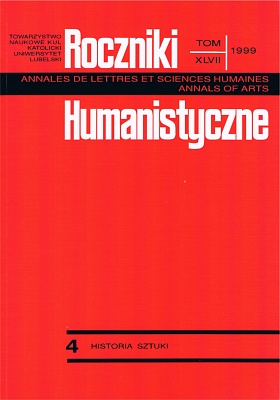The Church Fathers about the Importance of Paintings in the Passing on Faith
Abstract
Christianity is a religion of word and image. Both media have played an important role in the process of passing on the contents of Revelation and Tradition. There were periods when either word or image was granted the leading part. In order to understand the place and function of image in Christian tradition, it is crucial to remember patristic thought that had paved the way for the development of Christian iconography. It is in the writings of the apologists of faith and the Church Fathers that the views of opponents and advocates of allowing images to be part of the cult clashed. Christianity entered the world of ancient culture together with the message of the Gospel. On the one hand it seemed that the ban on making images and worshipping them was still binding in the communes consisted of the converted Jews; on the other, they feared idolatry which would threaten Christianity on the part of pagans and the converted Christians. The basic theological reflection concentrated on the question of legitimizing images in the cult. An important part in this process was played by the Latin writers. Their attitudes, as regards allowing images, were very unfriendly, e.g. Tertullian, Euzebius of Cezarea, Augustine and Heronymus, and the Eastern writers, mainly the Cappadocian Fathers, such as Basil of Cezarea, Gregory of Nyssa, Gregory Nazjanzen who ardently advocated the worship of the saints in their images. Philosophical thought was reflected in the official opinions held by the emperors: Constantine, Julian and Theodosius. The material which has been presented here shows the process of the formation of the Christian doctrine on the function of images in the first six centuries and does not contain the discussion about the cult of images, a dispute that broke out in the eighth century.
Copyright (c) 1999 Roczniki Humanistyczne

This work is licensed under a Creative Commons Attribution-NonCommercial-NoDerivatives 4.0 International License.





